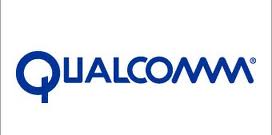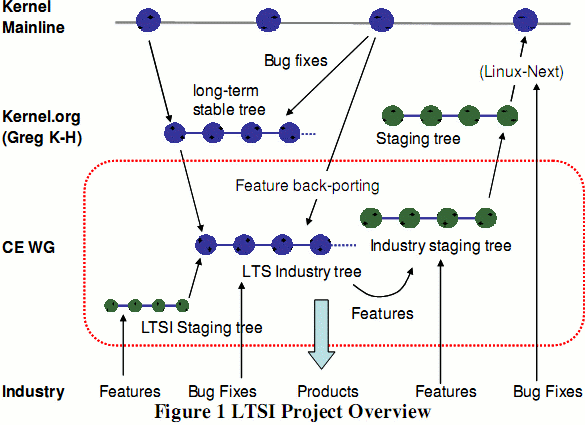Qualcomm introduced FastCV (Fast Computer Vision), a mobile-optimized computer vision (CV) library that includes the most frequently used vision processing functions for use across a wide array of Android mobile devices. FastCV provides computationally intensive vision processing APIs, with hardware acceleration and better performance on mobile devices. FastCV is designed for efficiency on all ARM-based processors, but is also especially tuned to take advantage of Qualcomm’s Snapdragon processors (Qualcomm S2 and above). That’s because FastCV for Snapdragon can offload processing onto various subsystems within the processor, whereas FastCV for ARM is limited to acceleration on the CPU. FastCV is the framework at the heart of Qualcomm’s vision-based Augmented Reality (AR) SDK, because AR is much more precise and useful when it’s based on camera input than on location-based estimates. Qualcomm anticipates that FastCV will be used to build additional frameworks that will allow developers of computer vision apps to build […]
ARM Unveils 64-Bit ARMv8 Architecture
ARM has just disclosed the technical of the ARMv8 architecture (to selected partners), featuring 64-bit instruction set support, extended virtual addressing, and backwards-compatible 32-bit support, so that software designed for ARMv7 (Cortex-A family) cores will run on the ARMv8 architecture. Here are the key points of the press release: The ARMv8 architecture consists of two main execution states, AArch64 and AArch32. The AArch64 execution state introduces a new instruction set, A64 for 64-bit processing. The AArch32 state supports the existing ARM instruction set. The key features of the current ARMv7 architecture, including TrustZone®, virtualization and NEON™ advanced SIMD, are maintained or extended in the ARMv8 architecture. … In support of the introduction of the ARMv8 architecture, ARM is working to ensure a robust design ecosystem to support the 64-bit instruction set. The ARM compiler and Fast Models with ARMv8 support have already been made available to key ecosystem partners. Initial […]
I’m Watch: Freescale i.MX233 based Android Watch
I’m Watch is a wireless (Bluetooth) watch designed by an Italian Company http://www.imwatch.it currently showcased at ARM Techcon 2011. The device is powered by Freescale i.MX233 feature a capacitive touchcreen and runs Android. It can synchronize with any Android smartphone and iPhones via Bluetooth. The company developed an Android API for this watch. The product will be ready before Xmas and be available for 299 Euros (base version) in Europe, although you’d have to wait until January if you are based in the US. If you want to show off you can buy the Gold version for 12,000 Euros. There already have pre-orders for 30,000 pieces. The company will also announce other services at CES 2012 such as I’m Market, an app store to download apps for the watch and I’m Music an app to listen music via the watch. Watch the video below to see the Android watch in […]
Raspberry Pi at ARM Techcon 2011
Raspberry Pi Foundation is currently at ARM Techcon 2011 showcasing their 25 USD ARM11 Linux Computer unveiled last May. The board is build around Broadcom BCM2835 (ARM11 @ 700Mhz + GPU) application processor with 128/256MB “soldered” on top of the processor (Package on package (PoP) technology) and a USB Hub/Ethernet adapter chip and that’s it. The board features an Ethernet 10/100 RJ45 connector, 2 USB 2.0 port, an Audio out, HDMI and composite video output and an SD card slot. They currently only have the larger alpha board, the final board will be shrunk to the size of a business card and should be available in November 2011 (but most probably December). They believe the board will have better multimedia performance than the Beagleboard. I’m not convinced of that yet, but we’ll see. There will be two versions: Without network and 128 MB RAM – 25 USD Network support (Ethernet) and […]
Mentor Embedded Inflexion UI Demo for STB/IPTV
Mentor Embedded developed a user interface for STB/IPTV demo using their Inflexion UI framework and they showcase it at ARM Techcon 2011. The demo runs on Android and looks very smooth thanks to OpenGL ES hardware acceleration. They also have a separate demo with pandaboard and a laptop running Sourcery codebench development tool to show how to develop a simple user interface with Inflexion UI. Finally, they showcase “Stella“, a self-balancing robot with 2 wheels. The board is based on TI Stellartis (Cortex M3) micro-controller and runs Mentor Embedded Nucleus RTOS.
Ubuntu on Tegra 2 Netbook and Ubuntu Server on Pandaboard
Canonical showcases several demos at ARM Techcon 2011: Toshiba AC-100 Netbook (Nvidia Tegra 2) running Ubuntu 11.10. with Unity interface. Freescale i.MX53 board playing a 1080p video in Ubuntu 11.10. TI Pandaboard running Ubuntu 11.10 Server Edition. Ubuntu 11.04 is not officially supported for Toshiba AC-100, but the community if working on it and the image can be downloaded at http://ac100.gudinna.com/ Canonical however supports Netbook and Headless (Server) edition for OMAP3 (Beagleboard) and OMAP4 (Pandaboard). Those image are available at https://wiki.ubuntu.com/ARM/NattyReleaseNotes Watch the interview by Charbax and demos in the video below.
Texas Instruments OMAP 4 / OMAP 5 Update at ARM Techcon 2011
Katie Morgan interviews Brian Carlson, OMAP Product Line Manager – TI, at ARM Techcon 2011. They talk about current products using OMAP4 such as the Amazon Kindle Fire, Motorola Bionic, Motorola Razr and Toshiba AT200. Then they discuss about OMAP 5. Brian explains that OMAP 5 is an extension of OMAP 4 so that once you write software for OMAP 4 it will run on OMAP 5, so the transition is very easy. Products using OMAP 5 will start shipping end of 2012, beginning of 2013. They also talked about the new Cortex-A7 and big.LITTLE processing, but it seems there is no formal announcement from TI on the matter, right now. Finally, they showed two demos: an OMAP4 platform streaming 1080p video stream from Netflix and an augmented reality demo where you show a picture to the camera to start a video on the phone.
Long Term Support Initiative (LTSI) Linux Kernel for Consumer Electronics
The Linux Foundation announced a new project, the Long Term Support Initiative (LTSI), created by the Consumer Electronics Workgroup (CE WG) at Linuxcon Europe 2011 in Prague. LTSI aims at reducing duplication of effort in maintaining separate private industry kernel trees. The LTSI project intends to deliver an annual release of a Linux kernel suitable for supporting the lifespan of consumer electronics products and regular updates of those releases for two to three years. The project is backed by several companies in the consumer electronics industry including Hitachi, LG Electronics, NEC, Panasonic, Qualcomm Atheros, Renesas Electronics Corporation, Samsung Electronics, Sony and Toshiba. LTSI will allow device makers to spend less time doing significant back-porting, bug testing and driver development on their own, which carries substantial cost in terms of time-to-market, as well as development and engineering effort to maintain those custom kernels. In some ways, this is similar to Linaro, […]









